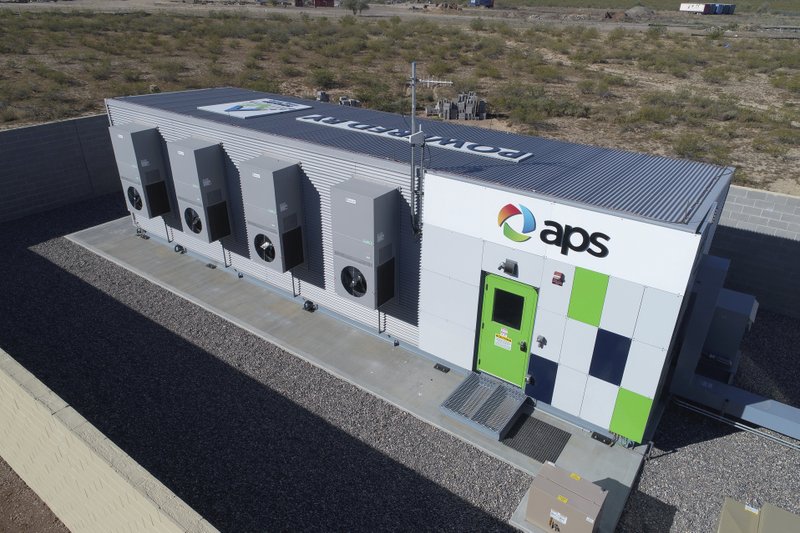PHOENIX -- A 2-megawatt battery west of Phoenix, one about the size of a semi trailer, caught fire and exploded in April, sending eight firefighters and a police officer to the hospital and highlighting the challenges and risks of the new technology.
Arizona's largest electric company installed the batteries near neighborhoods with a large number of solar panels, hoping to capture some of the energy from the afternoon sun to use after dark.
Arizona Public Service has been an early adopter of battery storage technology seen as critical for the wider deployment of renewable energy and for a more resilient power grid.
But with an investigation into the fire ongoing, and no public word on its cause, the incident is being closely watched by energy storage researchers and advocates.
"This is getting attention, and I think everyone realizes that too many safety incidents ... will be detrimental going forward," said George Crabtree, director of the Joint Center for Energy Storage Research, a partnership of national laboratories, universities and companies funded by the U.S. Energy Department. "So I think it's being taken very seriously."
Arizona Public Service has assembled a team of engineers, safety experts and first responders to work with the utility, battery-maker Fluence and others to remove and inspect the 378 modules that comprise the McMicken battery system and figure out what happened.
Arizona Public Service installed the 2-megawatt battery systems at a substation in Surprise, outside Phoenix, in 2017 and another near the Festival Ranch development in nearby Buckeye. They help the utility manage fluctuations from clouds or the setting sun in areas with a large number of rooftop solar panels.
Those batteries are tiny in comparison to the 850 megawatts that Arizona Public Service plans to build by 2025.
On the current electric grid, energy is used as it's generated; the supply and demand must match, or customers will face blackouts or power surges. This is a challenge for wind power and solar power, which are unpredictable and inconsistent. At times, California struggles to generate solar energy; on other days, it produces so much that its utilities pay the Arizona utility to take it off the grid.
Storing energy helps utilities to manage peaks and valleys.
California and Hawaii have set goals of eliminating fossil fuels from their energy grids in the coming decades, and many states are expanding mandates for a portion of energy to come from renewable sources.
The Arizona Public Service fire was the third involving a utility-scale battery. One was at a utility-owned battery in Flagstaff in 2012, and the other was in Hawaii.
The utility has shut down its two similar batteries while awaiting the investigation's results, but the utility is not slowing down its plans to deploy new batteries, said Alan Bunnell, a company spokesman.
"We believe energy storage is vital to a clean energy future here in Arizona," Bunnell said.
A Section on 06/24/2019

